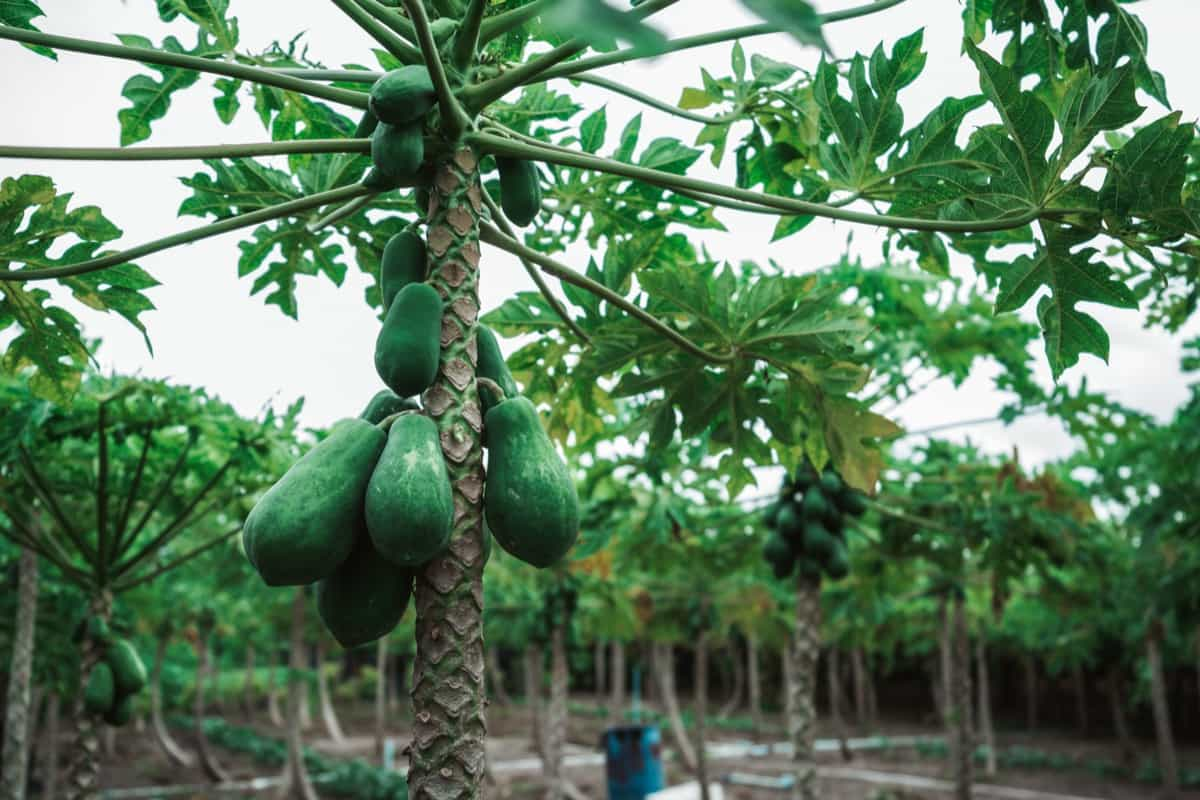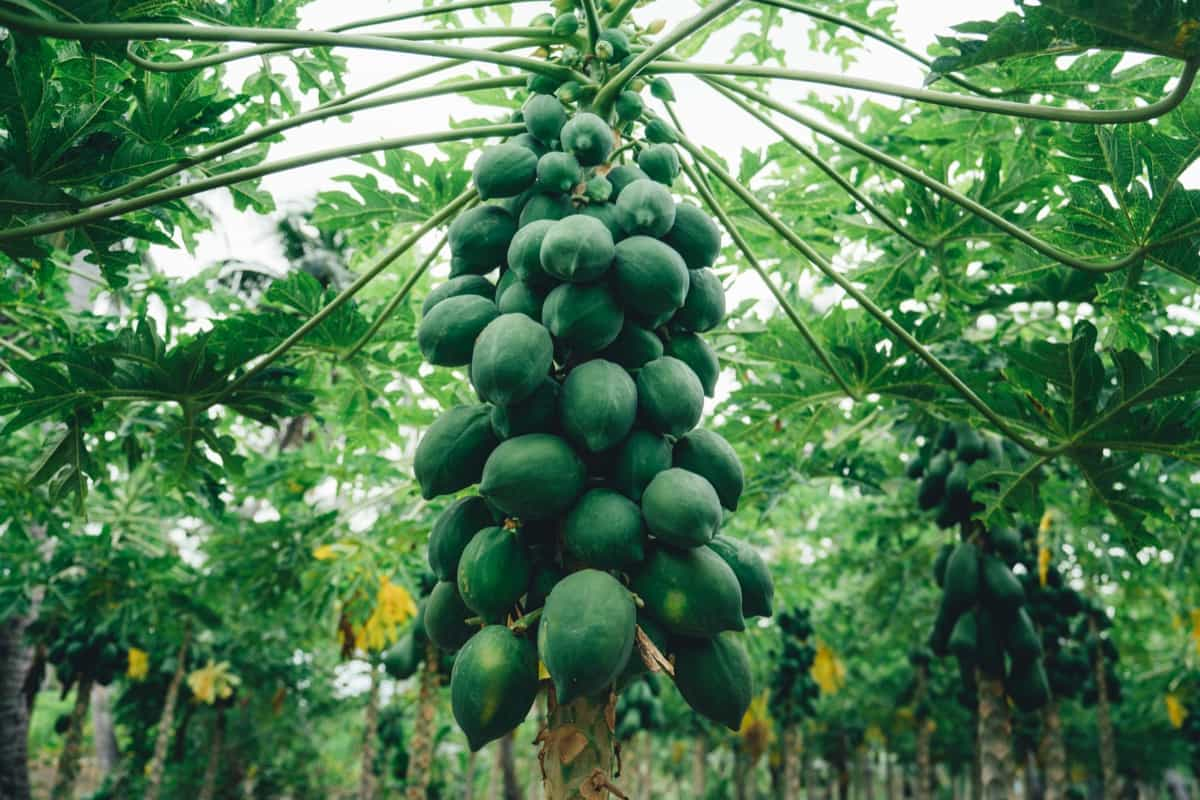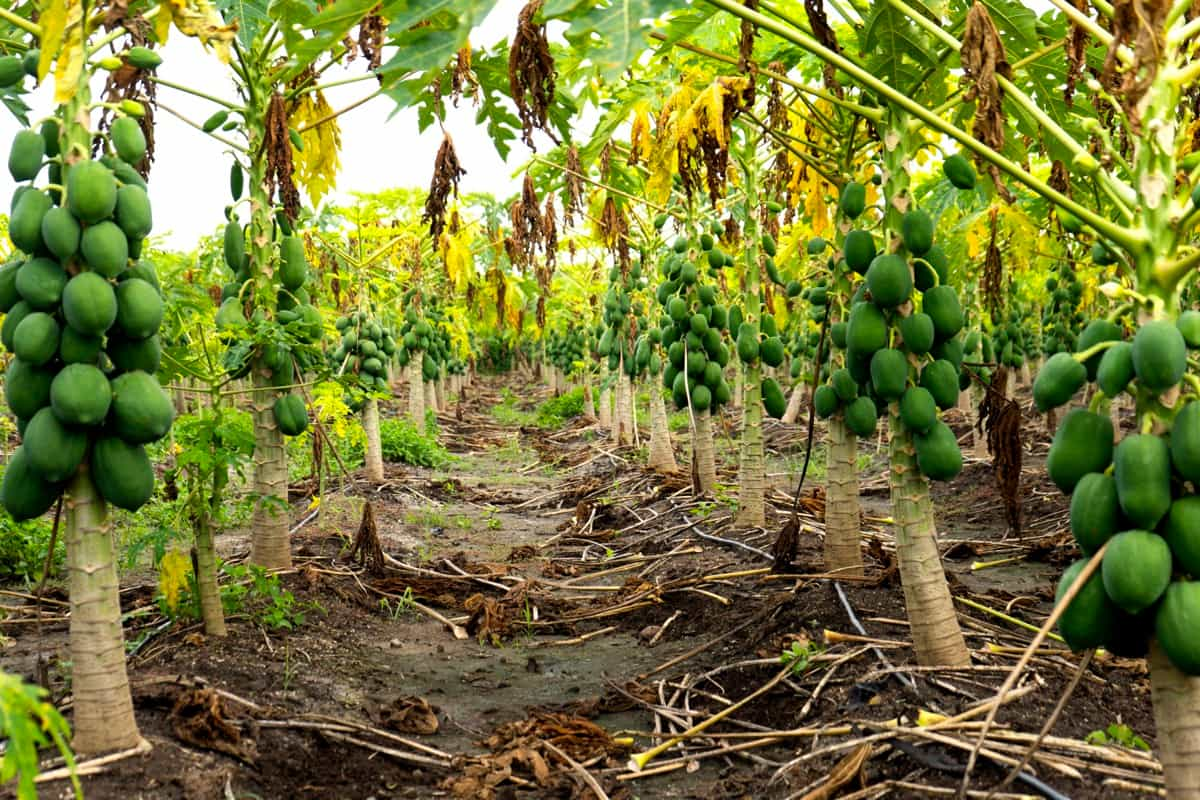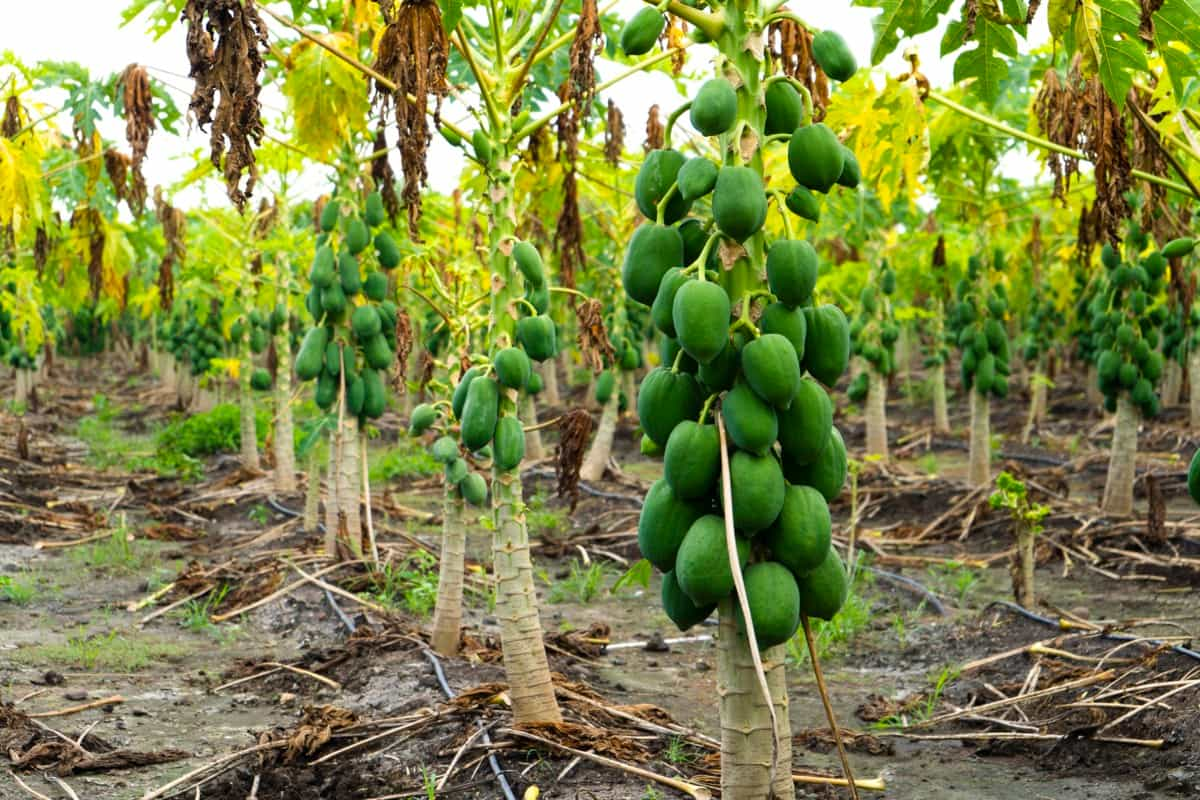This succulent fruit comes from the Carica Papaya plant, a member of the Caricaceae family. Choosing the best season for planting is essential as it sets the stage for optimal growth conditions. The way you plant your Papaya seeds and space out your plants can significantly impact their development and yield.

Selection of Planting Material
When planting Papayas, selecting the right planting material is crucial for successful growth. Opting for healthy and disease-resistant seedlings or seeds ensures a strong start for your Papaya garden. Look for reputable nurseries that offer high-quality Papaya plants or seeds. Choose robust seedlings with vibrant green leaves and sturdy stems, indicating their vitality and potential for thriving in various conditions.
Additionally, consider the specific variety of Papaya you want to grow based on factors like taste preference or climate suitability. Conduct thorough research to understand the characteristics of each type before making your selection.
Seed Treatment and Germination Methods
Proper seed treatment and germination methods are vital for successful growth. Before planting, ensure that the seeds are fresh and healthy. To improve germination rates, consider soaking the seeds in warm water for a few hours or lightly scarifying them. Another way is to use a damp paper towel inside a bag to create a mini greenhouse effect for faster germination.
Keep the seeds in a warm, well-lit area until they sprout. Remember, each seed is like a tiny possibility waiting to bloom into a thriving Papaya plant. Please treat them with care and attention as you kickstart your journey towards growing delicious Papayas at home.
Best Season for Planting Papayas
Papaya plants thrive in warm and tropical climates, so it’s best to plant them during the warmer months of the year when temperatures are consistently above 15°C. In most regions, spring and summer are ideal seasons for planting Papayas. During these warmer months, Papaya plants have optimal conditions for growth and development. The increased sunlight and longer days provide ample energy for the young plants to establish themselves in their new environment. Proper timing can significantly affect the overall health and productivity of your Papaya crop.
In case you missed it: Top 15 Papaya Varieties to Grow in Your Garden: A Guide for Beginners

Soil Preparation Techniques
Before planting, it’s essential to assess the soil quality and make any necessary amendments. Start by clearing the weeds and debris to create a clean planting bed. Next, conduct a soil test to determine the pH level and nutrient content. Based on the results, you may need to add organic matter to improve soil fertility. Once the plant is established, consider incorporating a balanced fertilizer high in potassium to promote fruiting. Mix amendments into the soil to ensure an even distribution of nutrients. Loosen compacted soil and create raised beds if necessary to ensure proper drainage.
Optimal Planting Depth and Method
Ideally, it would help if you planted your Papaya seeds at a depth of around 1 inch in loose soil that drains well. This allows the roots to establish themselves without suffocating or becoming waterlogged. Many gardeners use a common method of creating a small hole in the soil, placing the seed inside, covering it with a thin layer of soil, and gently patting it down. Avoid planting too deep, as this can inhibit germination or lead to weak root systems. Conversely, planting too shallow may expose the seed to drying out quickly.
Determining Row and Plant Spacing
The recommended spacing between rows should be around 8-10 feet to allow enough room for the plants to spread out as they grow. For individual Papaya plants within a row, aim for a spacing of 6-8 feet apart. This will ensure that each plant has ample space to develop its root system without competing with neighboring plants.
Proper spacing promotes adequate airflow and sunlight penetration, aids in pest management by reducing overcrowding, and allows for easier access during maintenance tasks such as pruning and harvesting. By carefully planning and measuring the distance between rows and individual plants, you can create a well-organized Papaya plantation that maximizes productivity while promoting overall plant health and vigor.
Use of Planting Aids and Tools
Planting aids such as seedling trays and dibbles can help streamline the planting process, ensuring proper spacing and depth for each plant. Tools like shovels, rakes, and watering cans are essential for preparing the soil and maintaining optimal growing conditions. By utilizing these planting aids and tools effectively, you can enhance the productivity of your Papaya plants. Remember to choose quality tools that are suitable for your needs for a successful harvest.
In case you missed it: How to Control Pests and Diseases in Papaya: Causes, Symptoms, Chemical, and Biological Management

Incorporating Irrigation Systems at Planting
Papaya plants require consistent moisture, especially during the early stages after planting. Drip irrigation is highly recommended as it delivers water to the plant roots, reducing water wastage and minimizing the risk of diseases caused by excess moisture on leaves. Installing a drip system at planting ensures that each young Papaya plant receives adequate hydration without any stress. By providing a controlled amount of water to your Papayas through a well-designed irrigation system, you can promote overall plant vigor.
Mulching for Young Papaya Plants
Mulching is a crucial step in promoting healthy growth and development for young papaya plants. By applying an organic mulch layer around the base of the plant, you can help retain moisture in the soil, suppress weed growth, and regulate soil temperature. Organic materials like grass clippings, straw, or compost make excellent mulching choices.
When mulching young Papaya plants, ensure that the layer is applied evenly around the base of the plant without touching its stem directly. This will prevent rotting and potential damage to the plant. Replace any decomposed or thinning layers with fresh mulch to maintain optimal growing conditions for your young Papaya plants.
Monitoring Initial Growth and Adjustments
Monitoring the initial growth of your Papaya plants is crucial to ensure their healthy development. Keep a close eye on the color and size of the leaves, as any discoloration or stunted growth could indicate issues that need attention. Adjustments may be necessary in terms of watering frequency, sunlight exposure, or nutrient levels in the soil. Make sure to check for pests or diseases that could harm your Papayas. Early detection can prevent major infestations that might irreversibly damage your plants.
In case you missed it: How to Grow Papaya from Seed to Harvest: Check How this Guide Helps Beginners

Look out for common pests like aphids, mites, or whiteflies, and treat them promptly with natural remedies or organic pesticides if needed. Remember to monitor the initial growth stages and make necessary adjustments along the way to help your Papayas thrive. With the right planting techniques and care, you can enjoy a fruitful garden filled with luscious Papaya fruits for years to come.
- How to Grow Hibiscus from Flower
- Plantation Ideas for Home Decoration: A Beginners Guide
- Flower Garden Designs and Layouts for Beginners
- Planting and Spacing Techniques in Papaya: A Beginner’s Guide
- Growing Gold: Essential Techniques for Planting Pineapples
- How to Make Kalanchoe Plant Bushy: Home Remedies and Solutions
- 11 Reasons Why Your Gardenia is Not Blooming: Home Remedies and Solutions
- Eco Elegance: The Guide to Designing a Drought-Tolerant Landscape
- Gardening on a Slope: Strategies for Hillside Landscaping